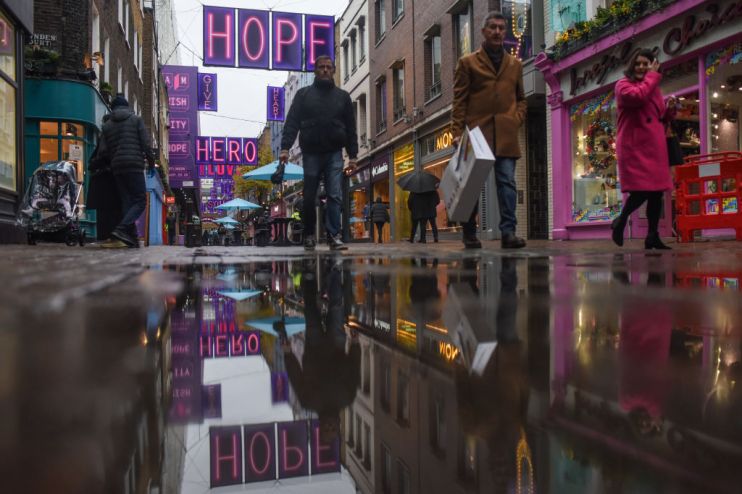Covid was the final lever for the creative destruction of the high street: it’s not gone, just changing

If you believe some of the gloomier predictions, the high street is on life support and will breathe its last when the government eventually pulls the plug on the comprehensive Covid relief package that has kept it alive.
Last week’s budget offers another lifeline but is, in effect, a stay of execution in a process of death by a thousand cuts which began with the first bloodletting in 2008, when Woolworths collapsed and sent shockwaves through the UK retail sector.
Big ticket names have indeed fallen like dominoes in recent years. Jessops, Mothercare, Links of London, Thomas Cook. All went to the wall before coronavirus.
However, the narrative that the pandemic caused the collapse of Debenhams, the Arcadia Group, TM Lewin, Cath Kidston and others is convenient.
It contains an element of truth but is only part of the story. Their demise, and the changes we will see throughout the rest of the year and into 2022, are symptoms of retail trends that started long before the pandemic and even the financial crisis of 2008.
The pandemic has been a catalyst, as Sir John Timpson puts it, “The Covid-19 crisis will cause five years’ change to our high streets in less than 12 months.” But the true culprits are changing shopping habits and failure to innovate.
And the good news for towns, shoppers and communities is that reports of the death of the high street are premature. It is not dying, it is just evolving.
Retailers that survive to open their doors on April 12 will benefit from pent-up demand. And those that have struggled will take advantage of news lines of cheap credit to innovate.
The pandemic has not been a financial disaster for everyone. Savings have increased and have been concentrated among wealthier households. Many may be reluctant to spend their savings, but there are plenty of consumers in secure jobs with extra money in their pocket and a desire to spend it, as happened last summer after the first lockdown lifted. That stored money will find a home quickly, particularly while foreign travel remains tricky and British retailers have a captive audience. Expect a boom for DIY chains and garden centres over the summer.
The main challenge for high street retail and hospitality throughout 2021 and into 2022 will be the cost of bricks and mortar, which continues to be expensive. The onus falls on landlords who will have to be flexible with tenants because CVAs inevitably end with creditors taking a haircut. In empty high street spaces, particularly larger units, expect to see more pop-up businesses and creative rent arrangements, such as profit share partnerships.
Many businesses now need to reduce their debt burdens or find investment to fund business development. Banks, which largely shut up shop during lockdown and concentrated on distributing Government-backed loans, lost ground to the private debt market, which is where businesses such as New Look turned for options.
Private equity credit funds, hungry for opportunity, can deploy cash quickly and can be much easier to deal with than banks. They will be a lifeline for many and help kickstart a year of innovation and change on the high street.
Inevitably, bigger spaces left by department stores such as Debenhams or John Lewis will be redeveloped. Some will become residential, some leisure and there will continue to be demand for office space as businesses downsize, upscale or look to relocate or set up satellite offices. Forward-thinking town centre managers will create environments for outlet centres in their larger empty spaces to service shoppers who are traveling less.
We will continue to see some big names go under. Little can be done for retailers that were struggling before and have no viable business plan or the liquidity to build competitive online offerings. Meanwhile, some zombie companies that have been trundling along will continue to do so until someone pulls the plug.
But the high street will not fill with tumbleweed. New start-ups will arrive, drawn by favourable rent and easy investment options. The trend will be towards more independents, more variety and more experiential retail, driven by fresh ideas and new entrepreneurs. Some of the more successful online shops will also stake their claims on the high street. The real winner will be the customer.